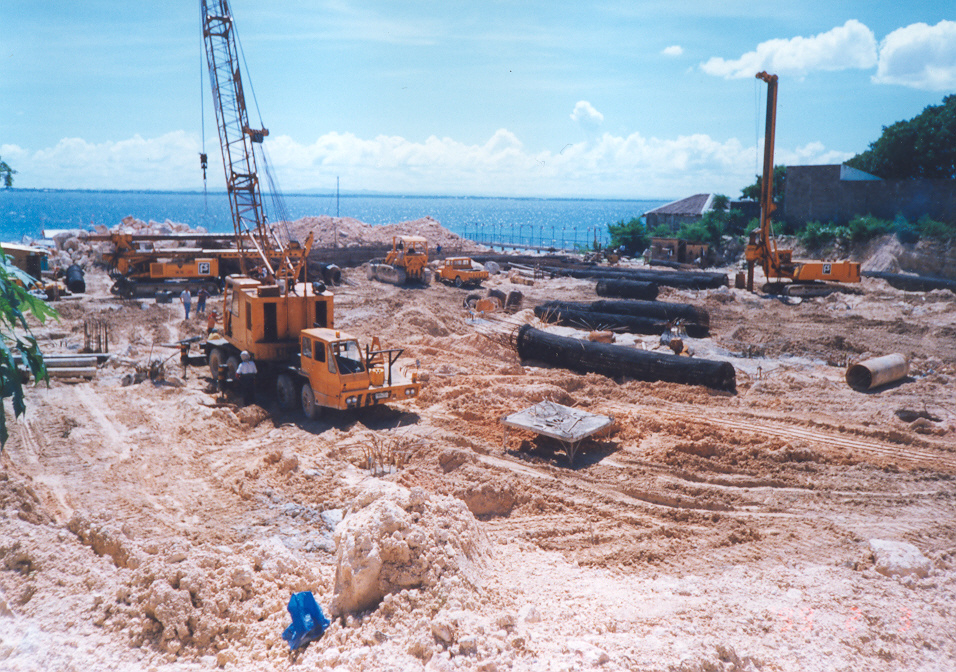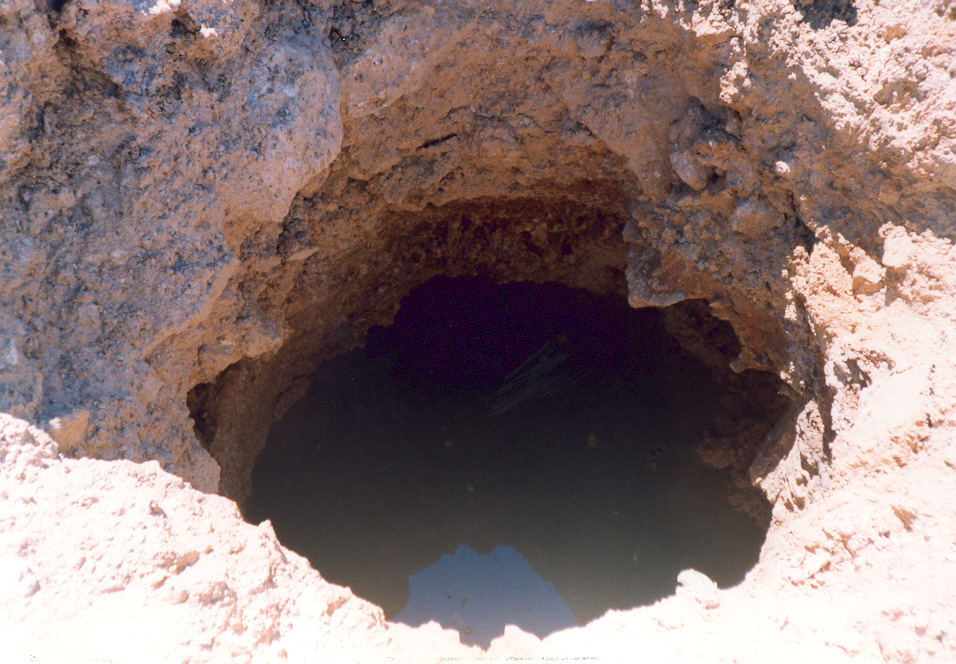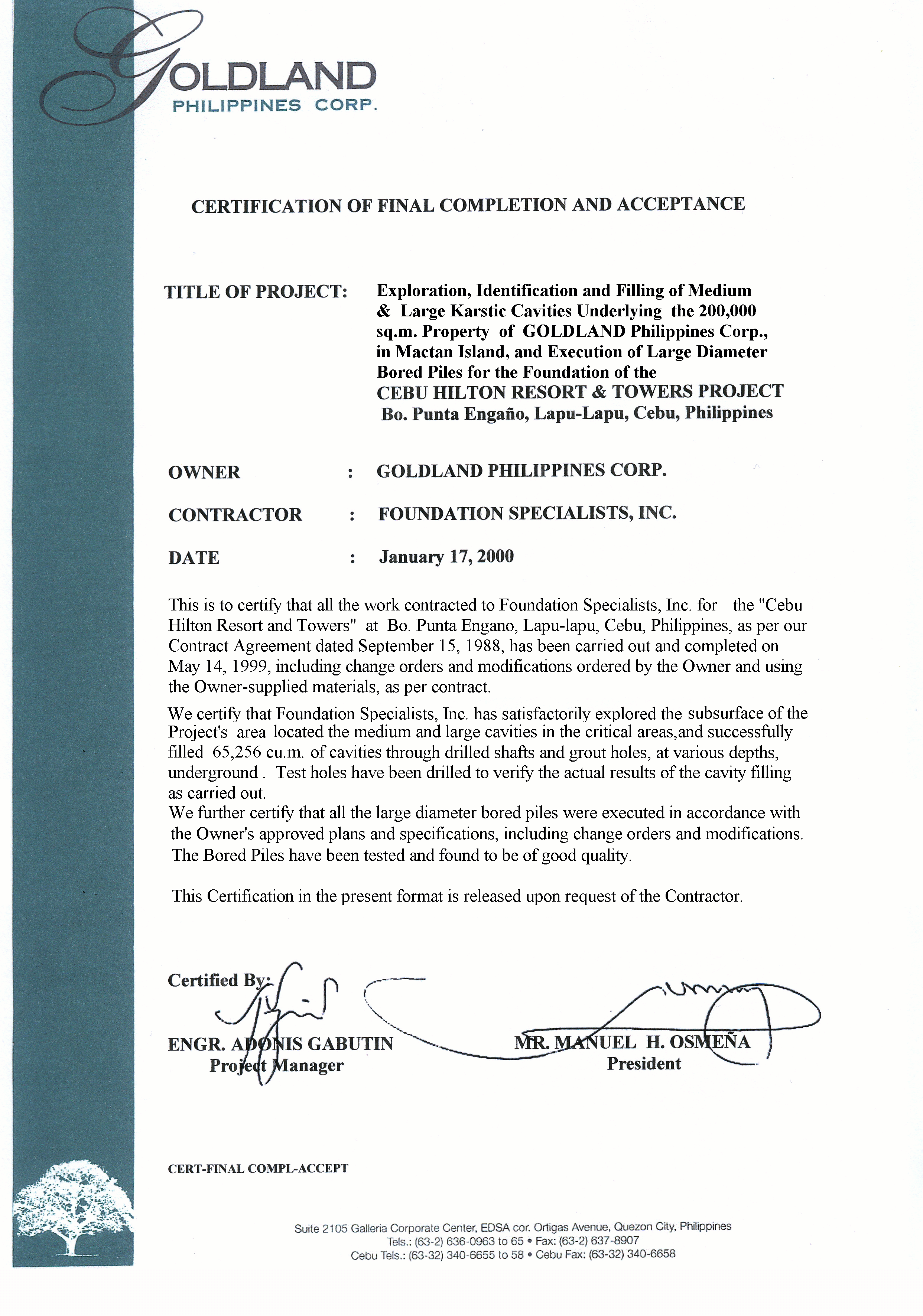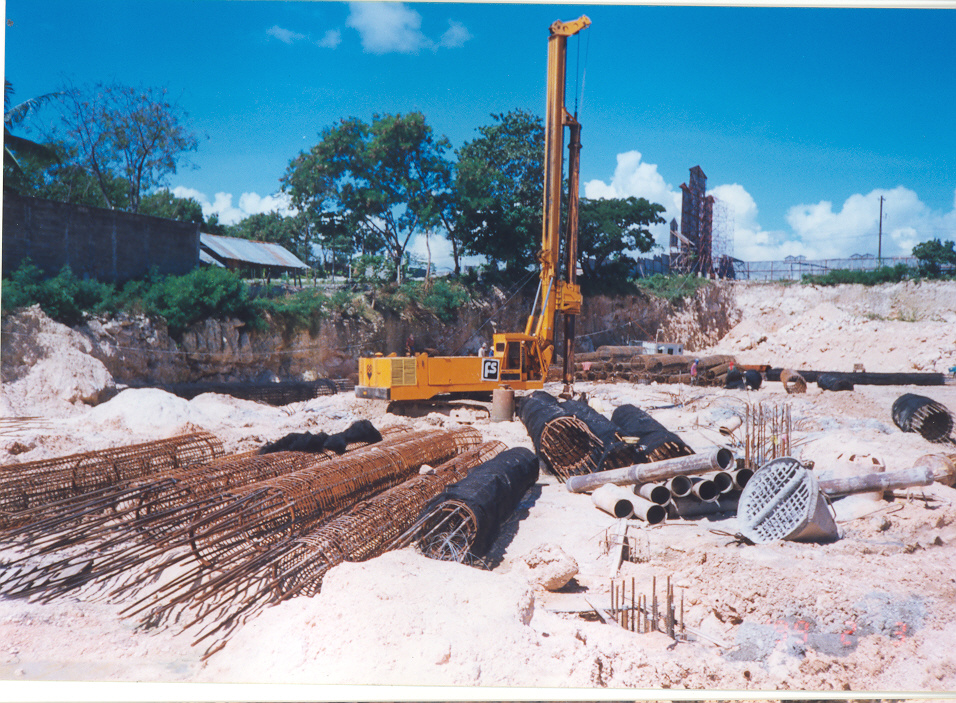Caves and cavities in karst
Building on karstic rock formations & Remediation of Karstic Rock Formations
Typical karst formation related erosions leading to caves , sinkholes
Limestone formations and Dolomite (Coral Rock Formations) are often eroded by rain water (rich in CO2) to form cavities which can reach huge dimensions of caverns and tunnels and create real challenges to surface construction and can lead to sink-holes, unless taken care of properly. FS was requested by several developers to study the feasibility of constructing high raising buildings on cavernous limestone in Cebu and to propose economically affordable solutions for the construction of safe and durable foundations to be installed within cavernous coral rock formations on the coastline. Eventually the most economical solution capable to ensure long term durability of the foundations and the safety of the of the superstructure resulted to be the installation of sufficiently deep, large diameter, bored piles, partially cased, (with cavity mapped by koden), cast with concrete made with igneous rock aggregates and sulphate-resistant cement. All piles had to be tested for continuity. Other solutions were studied and eventually discarded because of the particular site conditions: interconnected cavities communicating with the sea , and therefore exposed to seawater, which would have required open ended quantity of cement and uncertain results, had cement grouting been chosen, with out of control cost and uncertain efficiency of results. However with Karstic rock formations, regardless of the fact that the medium is a rock, there is no solution that fits all cases, each site morphology has to be evaluated and appropriate design shall be made for each different site, to suit the particular site conditions.
For large areas of Karstic rock formations to be be made suitable for utilization as building sites it is necessary to conduct an extensive Geo-Seismic study of the whole area, to determine position and dimensions of all cavities. Once the mapping of underground cavities is done, the study of the most appropriate remediation method has to be done to determine economically feasible interventions capable of allowing the installation of durable and safe foundation for whatever structure to be built on it.

 NOTE: The word "karst" originates from the German name for the limestone formations of regions in Slovenia and Italy, known as Kras or Carso.
NOTE: The word "karst" originates from the German name for the limestone formations of regions in Slovenia and Italy, known as Kras or Carso.
